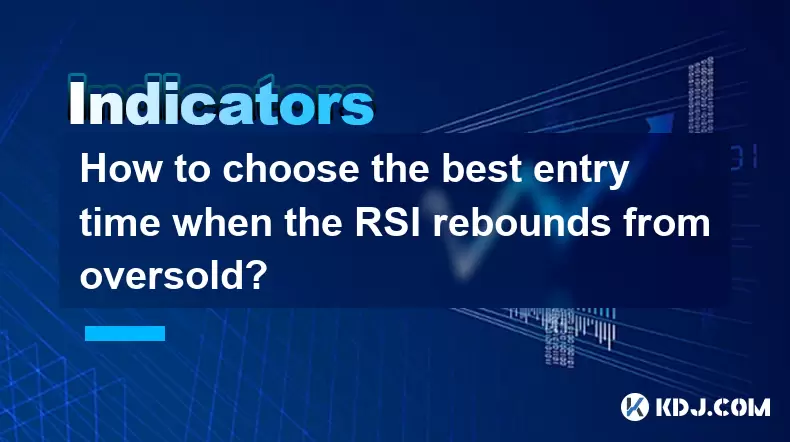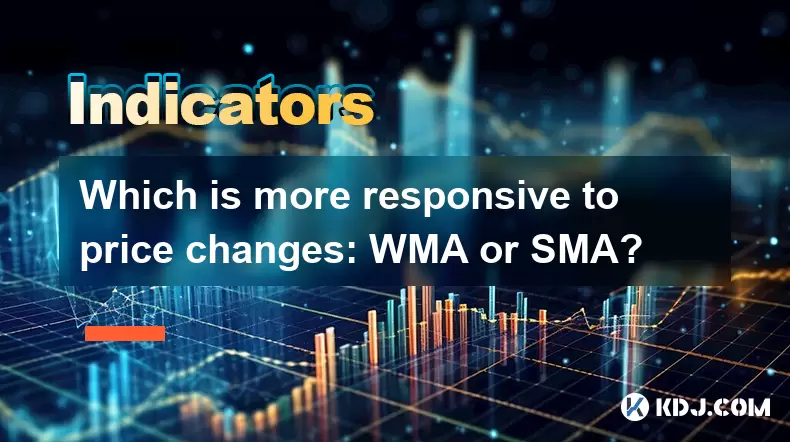-
 Bitcoin
Bitcoin $118300
-0.58% -
 Ethereum
Ethereum $3825
0.11% -
 XRP
XRP $3.137
-0.71% -
 Tether USDt
Tether USDt $0.9999
-0.01% -
 BNB
BNB $803.9
-3.37% -
 Solana
Solana $181.5
-1.94% -
 USDC
USDC $0.9999
0.01% -
 Dogecoin
Dogecoin $0.2238
-2.51% -
 TRON
TRON $0.3358
2.12% -
 Cardano
Cardano $0.7844
-2.16% -
 Hyperliquid
Hyperliquid $43.31
-1.48% -
 Sui
Sui $3.807
-4.04% -
 Stellar
Stellar $0.4203
-1.96% -
 Chainlink
Chainlink $17.79
-3.00% -
 Bitcoin Cash
Bitcoin Cash $567.8
-1.34% -
 Hedera
Hedera $0.2614
-4.30% -
 Avalanche
Avalanche $24.19
-4.46% -
 Litecoin
Litecoin $109.2
-0.74% -
 UNUS SED LEO
UNUS SED LEO $8.969
-0.01% -
 Toncoin
Toncoin $3.404
3.97% -
 Ethena USDe
Ethena USDe $1.001
-0.01% -
 Shiba Inu
Shiba Inu $0.00001307
-3.19% -
 Uniswap
Uniswap $10.33
-1.23% -
 Polkadot
Polkadot $3.884
-4.06% -
 Monero
Monero $312.9
-1.87% -
 Dai
Dai $1.000
0.01% -
 Bitget Token
Bitget Token $4.537
-2.24% -
 Pepe
Pepe $0.00001156
-3.40% -
 Cronos
Cronos $0.1437
-0.89% -
 Aave
Aave $282.8
-2.77%
How to choose the best entry time when the RSI rebounds from oversold?
A rising RSI from oversold (below 30) can signal a potential bullish reversal, but confirmation through price action, support levels, and volume is crucial for reliable entries.
Jun 19, 2025 at 09:36 am

Understanding the RSI Indicator
The Relative Strength Index (RSI) is a momentum oscillator used in technical analysis to measure the speed and change of price movements. It typically ranges from 0 to 100, with levels below 30 indicating oversold conditions, and levels above 70 signaling overbought conditions. When the RSI rebounds from oversold territory, it suggests that the downward momentum may be weakening, potentially offering traders an opportunity to enter long positions.
However, not every rebound from oversold leads to a significant upward move. Traders must carefully evaluate other factors before deciding to act. Simply relying on RSI crossing above 30 can lead to premature entries or false signals. Understanding how RSI behaves in different market environments is essential for accurate interpretation.
Confirming the Reversal Signal
When the RSI rises from below 30, traders should look for additional confirmation signs to avoid entering trades based on misleading signals. One such method is analyzing price action alongside RSI. If the price forms a bullish candlestick pattern—like a hammer, bullish engulfing, or morning star—while RSI is moving upward from oversold levels, this increases the probability of a valid reversal.
Another effective way to confirm the signal is by checking support zones. If the price is near a key support level and RSI is bouncing off oversold, it strengthens the case for a potential trend reversal. Additionally, combining RSI with other indicators like moving averages or MACD can filter out noise and improve decision-making accuracy.
Timeframe Considerations
The effectiveness of using RSI to identify entry points depends heavily on the timeframe being analyzed. On lower timeframes, such as the 5-minute or 15-minute charts, RSI can generate many false signals due to market noise. Therefore, it's often better to use RSI on higher timeframes, such as the 1-hour or 4-hour charts, where trends are more reliable and less prone to short-term volatility.
Traders should also consider aligning their trades with the weekly or daily trend. For instance, if the overall weekly structure is bullish and the RSI on the daily chart dips into oversold and starts to rebound, it presents a high-probability buying opportunity. Ignoring the broader trend can lead to trading against the dominant direction, which increases risk.
Volume Analysis and Order Flow
One often overlooked but crucial aspect when assessing RSI bounce opportunities is volume. A healthy rebound from oversold territory should ideally be accompanied by a noticeable increase in buying volume. Rising volume during the RSI recovery phase indicates strong participation from buyers, supporting the likelihood of a sustainable move higher.
Additionally, examining order flow through tools like order book depth or on-chain metrics can provide insights into whether large players are stepping in. If substantial buy orders appear at critical support levels while RSI is rising from oversold, it further validates the strength behind the potential reversal.
Risk Management and Entry Techniques
Even with a confirmed RSI rebound, proper risk management remains vital. Entering a trade without a clear stop-loss plan can expose traders to unexpected reversals. A common strategy is placing a stop-loss just below the recent swing low or key support zone. This ensures that if the price breaks lower again, losses remain controlled.
To refine entry timing, traders can use pullback entries after the initial RSI bounce. For example, once RSI has moved above 30 and price shows positive momentum, waiting for a pullback to a trendline, moving average, or Fibonacci retracement level before entering can offer better risk-to-reward ratios. Another technique involves entering gradually through scaling-in, where a portion of the position is taken at the first sign of a rebound and additional lots are added as the trend confirms.
- Identify RSI dipping below 30 and starting to rise.
- Look for confluence with support levels or bullish candlestick patterns.
- Check higher timeframes to ensure alignment with the broader trend.
- Verify increased volume or institutional buying activity.
- Place stop-loss beneath key support levels.
- Consider scaling in or waiting for a retest before full entry.
Frequently Asked Questions
What if RSI stays below 30 for a long time?
Extended periods of RSI staying under 30 can indicate extreme bearish pressure. In such cases, it's important not to assume an immediate reversal. Instead, wait for a sustained move above 30 along with other confirming signals before considering entries.
Can RSI be used effectively in sideways markets?
In ranging or sideways markets, RSI can be highly effective. Oversold readings may suggest potential bounces, while overbought readings might signal resistance. However, in these scenarios, it’s best to trade within defined support and resistance boundaries.
How does RSI behave during strong trends?
During strong uptrends or downtrends, RSI can remain in overbought or oversold regions for extended periods. In such cases, trying to fade the trend based solely on RSI can be risky. Instead, traders should focus on using RSI to identify potential pullbacks within the trend for favorable entry points.
Is RSI more reliable on certain cryptocurrencies?
RSI works across most cryptocurrencies but tends to be more reliable on major assets like Bitcoin (BTC) or Ethereum (ETH) due to their higher liquidity and more consistent price action. Less liquid altcoins may experience erratic RSI behavior due to sudden spikes or wash trading.
Disclaimer:info@kdj.com
The information provided is not trading advice. kdj.com does not assume any responsibility for any investments made based on the information provided in this article. Cryptocurrencies are highly volatile and it is highly recommended that you invest with caution after thorough research!
If you believe that the content used on this website infringes your copyright, please contact us immediately (info@kdj.com) and we will delete it promptly.
- Ozak AI Presale: Your Chance to Turn 1 ETH into 20? A Crypto Investment Deep Dive
- 2025-07-30 15:50:12
- IPO, Bitcoin, and Treasury: A New Era of Crypto Investment?
- 2025-07-30 14:30:12
- Bitcoin, Binance, and Whales: Decoding the Latest Market Moves
- 2025-07-30 14:50:12
- Bitcoin, Binance, and Whales: Decoding the $1.2B Shuffle
- 2025-07-30 16:10:12
- MultiBank Group's $MBG Token: Bridging TradFi and Web3 with LBank Listing
- 2025-07-30 16:10:12
- NFTs: Punks, Penguins, and the Market's Mosh Pit
- 2025-07-30 16:16:00
Related knowledge

What are the best WMA settings for day trading crypto?
Jul 30,2025 at 03:43pm
Understanding WMA in the Context of Crypto Day TradingThe Weighted Moving Average (WMA) is a technical indicator that assigns greater importance to re...

How can the WMA indicator be used to identify trends in the crypto market?
Jul 30,2025 at 04:56pm
Understanding the WMA Indicator in Cryptocurrency TradingThe Weighted Moving Average (WMA) is a technical analysis tool that assigns greater importanc...

What are the advantages of using the WMA indicator for crypto?
Jul 30,2025 at 03:21pm
Understanding the WMA Indicator in Cryptocurrency TradingThe Weighted Moving Average (WMA) is a technical analysis tool widely used in cryptocurrency ...

Which is more responsive to price changes: WMA or SMA?
Jul 30,2025 at 05:00pm
Understanding Weighted Moving Average (WMA)The Weighted Moving Average (WMA) assigns greater importance to recent price data, making it inherently mor...

What are the main differences between WMA, SMA, and EMA in crypto?
Jul 30,2025 at 02:50pm
Understanding the Role of Private Keys in Cryptocurrency WalletsEvery cryptocurrency wallet operates based on cryptographic principles, with the priva...

How is the WMA indicator calculated in cryptocurrency trading?
Jul 30,2025 at 02:35pm
Understanding the Weighted Moving Average (WMA) in Cryptocurrency TradingThe Weighted Moving Average (WMA) is a technical analysis tool widely used in...

What are the best WMA settings for day trading crypto?
Jul 30,2025 at 03:43pm
Understanding WMA in the Context of Crypto Day TradingThe Weighted Moving Average (WMA) is a technical indicator that assigns greater importance to re...

How can the WMA indicator be used to identify trends in the crypto market?
Jul 30,2025 at 04:56pm
Understanding the WMA Indicator in Cryptocurrency TradingThe Weighted Moving Average (WMA) is a technical analysis tool that assigns greater importanc...

What are the advantages of using the WMA indicator for crypto?
Jul 30,2025 at 03:21pm
Understanding the WMA Indicator in Cryptocurrency TradingThe Weighted Moving Average (WMA) is a technical analysis tool widely used in cryptocurrency ...

Which is more responsive to price changes: WMA or SMA?
Jul 30,2025 at 05:00pm
Understanding Weighted Moving Average (WMA)The Weighted Moving Average (WMA) assigns greater importance to recent price data, making it inherently mor...

What are the main differences between WMA, SMA, and EMA in crypto?
Jul 30,2025 at 02:50pm
Understanding the Role of Private Keys in Cryptocurrency WalletsEvery cryptocurrency wallet operates based on cryptographic principles, with the priva...

How is the WMA indicator calculated in cryptocurrency trading?
Jul 30,2025 at 02:35pm
Understanding the Weighted Moving Average (WMA) in Cryptocurrency TradingThe Weighted Moving Average (WMA) is a technical analysis tool widely used in...
See all articles

























































































